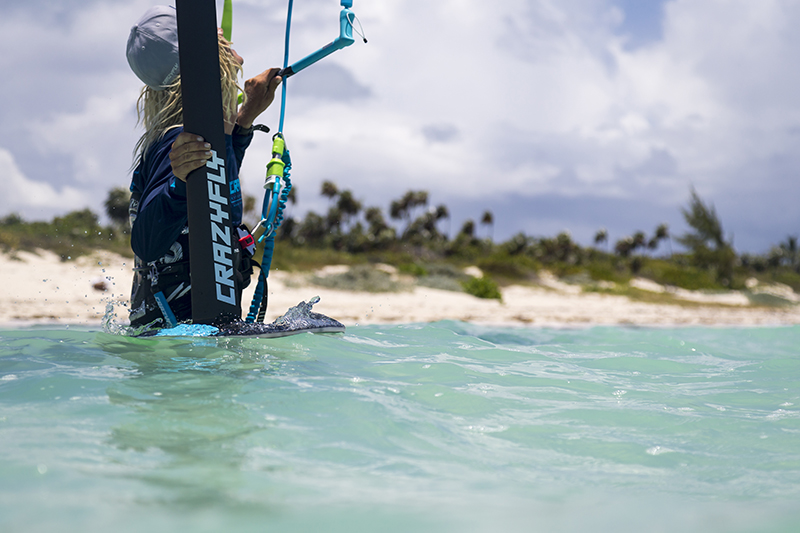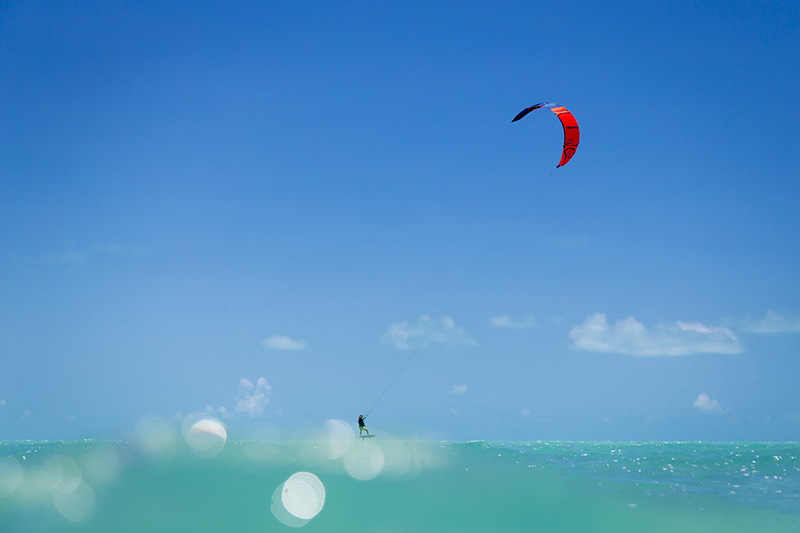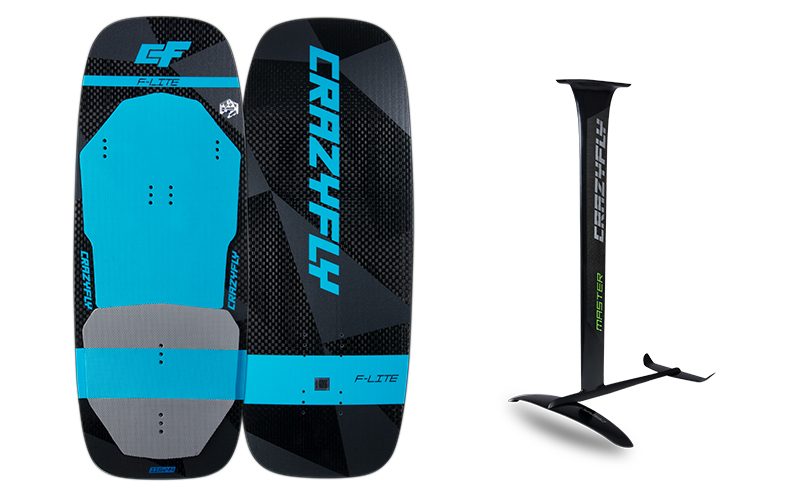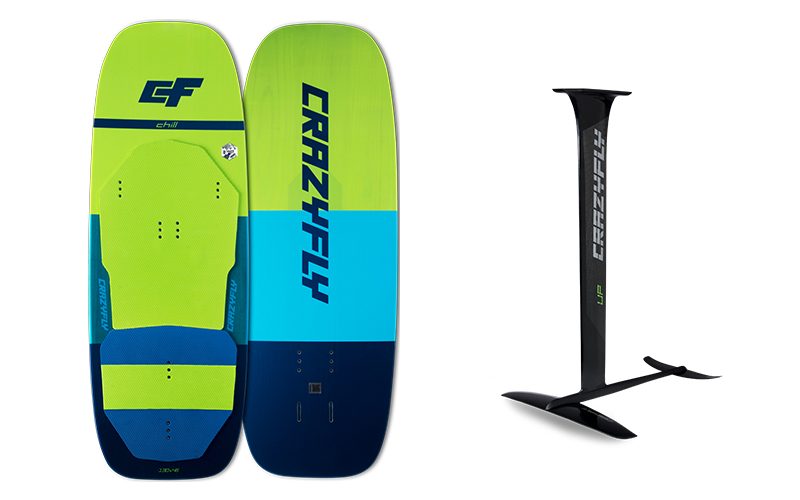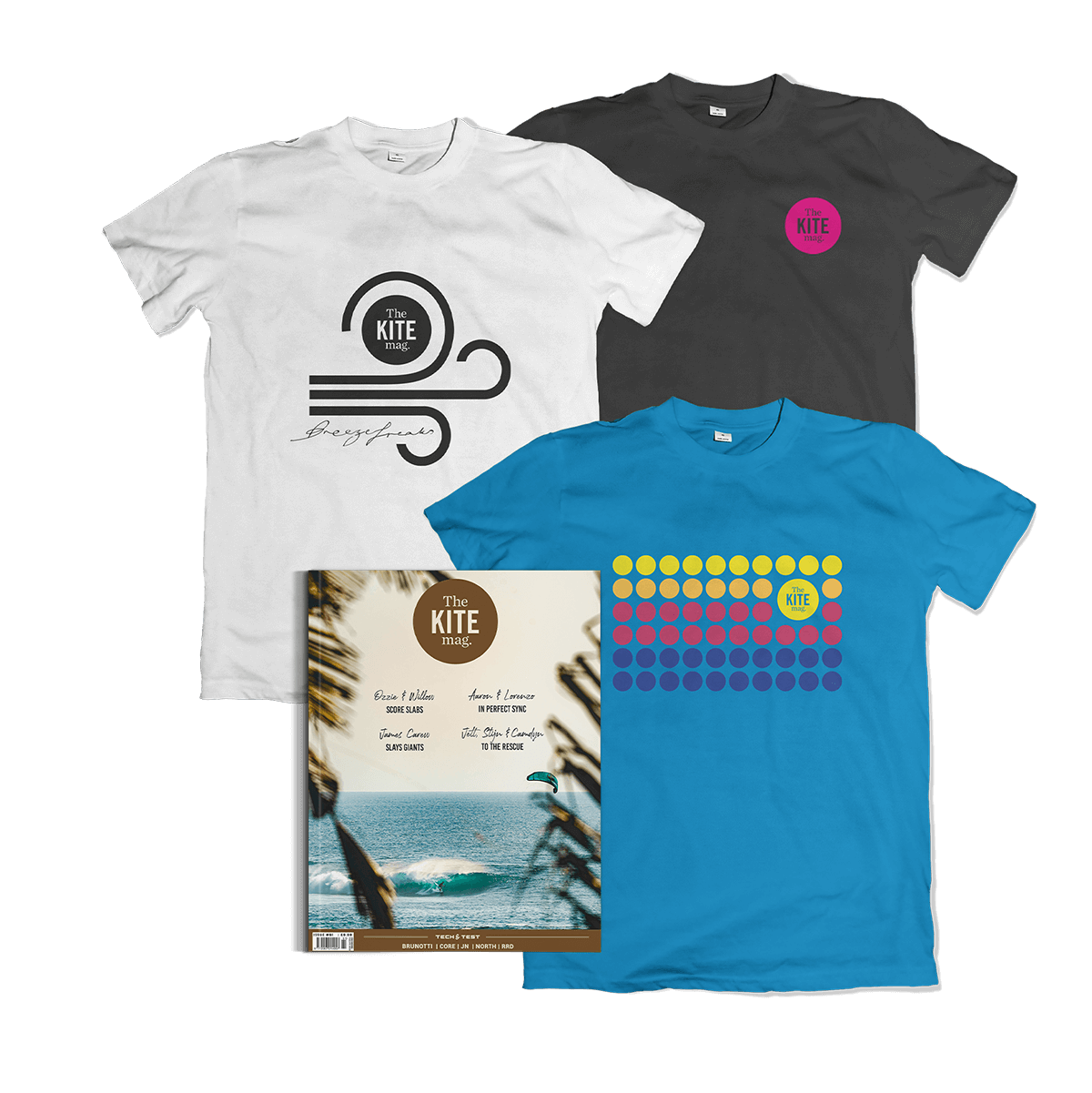Biding their time with the foil game, CrazyFly have learnt from the early adopters and now blazed in to the world-of-foils with two offerings: the Master and the Up. Both full carbon, both looking pretty insane…
Firstly, can you explain to us why you thought the time was right to introduce CrazyFly foils into your range?
To be honest, the right time to introduce foils in our range was quite a bit sooner. We have had a lot of customers asking for the foils over the last two years, but we did not want to take any shortcuts and compromise on the product quality and performance for the sake of having it ready sooner. Coming into the market a bit later also has its advantages. The market is a bit more settled now with trends that come and go. We have been tracking the demand for over a year, and thanks to that, we brought out products that customers really want. The new foils are selling really well.
And can you talk us through the characteristics of the two foils in your line up, the Up and the Master?
Let’s start with the more advanced Master foil. The Master is a high performance freerace foil aimed at intermediate to advanced riders. It offers high top speed, incredible upwind drive and superior stability. In terms of construction, it has a 101cm mast with a wood core inside and full high modulus carbon layup. The combination of wood core and carbon is a proven combo for light weight, amazing flex, strength and absolutely the best dynamics for transferring energy between the rider and the foil. The wings are also made with high modulus carbon, while the fuselage is aluminum. The aluminum fuselage ensures all parts are mounted together with a precise and tight fit that eliminates vibration and creates a seamless ride. It also eliminates the noise of the foil, so it is completely silent. We are proud to say that the foil is extremely light, even with the aluminum fuselage. It weighs only 3.0kg.
The Up is an all-round freeride foil suitable for beginners and intermediate riders. It offers high maneuverability, medium top speed and great stability. It is great for people getting into foiling, or for riders that like a medium speed playful foil. It has a 91cm mast. The Up is not far away from the Master in terms of construction. It has a foam core and full carbon layup on the mast, full carbon wings and an aluminum fuselage. The great thing is that all our foil components are modular and fit each other, so if you start with the Up foil, you can easily upgrade your front wing to the Master shape. The Up comes in at an amazing 2.8kg. Both foils are super simple to mount and dismount, with only seven screws. Perfect for traveling, the Up can even go as regular luggage.
How did you research and learn about the best way to construct a foil?
We did it the old fashioned way this time! We took aluminum foils and carbon foils out for testing. They are simply incomparable. The carbon foils are just so much nicer to ride and lighter to move around. With our super small and ultra-light twintip construction foil boards, we felt sorry for the guys moving around bulky volume boards with aluminum foils. The choice for us was simple to make after testing. Then of course came the hard part. Carbon foils are definitely not easy to make. Even though we have a lot of experience with carbon, this was a tough job. We consulted people from the airplane industry and also got in touch with experts in car racing. They had a lot of useful tips for wing shapes, software to use, layups etc. To be honest, it was a huge mix of brand new information that we had to put together to make carbon foils. But the result is definitely worth it.
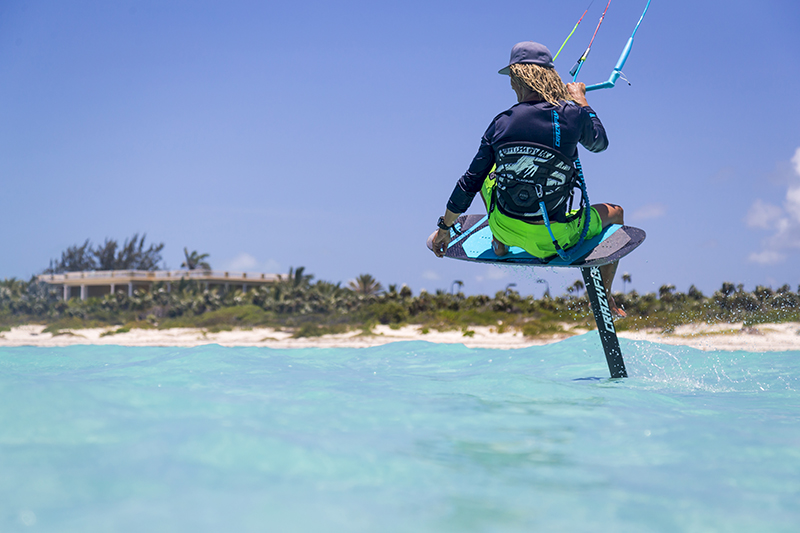
Can you explain to our readers the processes required to construct a foil?
This was something brand new for us. Of course, you need the basics like raw materials, but the process and machines used are completely different to what we did before. Our foils are produced with robotic hands that you often see in car production. The molds are made from a carbon fiber which we had never used before. Also, the resin does not come in a wet-out lamination, but is done with pre-preg carbon. Pre-pregs have the perfect amount of powder resin on the carbon fiber, have to be stored cold and are placed into the molds. Then the molds go into an autoclave that creates heat and vacuum pressure. This is the most advanced carbon fiber technology. To create the mast, the wings in their shapes and to give them the required strength, all of the above technology was required. It is almost impossible to do it in any other way. The wood core for the mast is also completely 3D shaped by the robotic hand. This is nothing you would see on a twintip where we use a regular CNC machine.
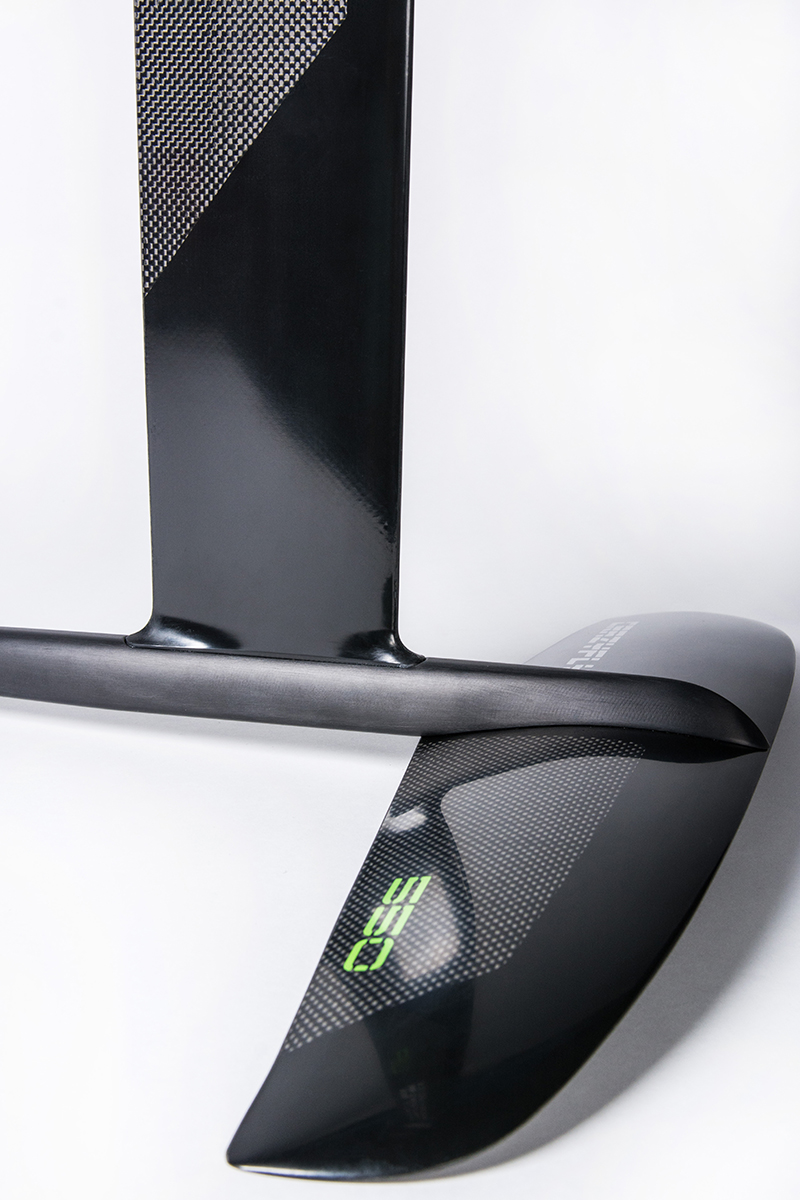
And how did you decide on the best options in terms of the profile and hydrodynamics of the foils?
Luckily things that fly and things that go through water are designed in a very similar way. We consulted with experts from both industries before designing the foil. Then of course, we used a software that simulates water flow around the foil 3D shape. You can clearly see the efficiency, lift and turbulences created by the trailing edge of the wings. When designing a foil shape, every detail matters and changes things. Whether that would be the profile of the wings, angle, thickness, surface area, balance points etc. It all has to fit, like playing the right tune on a flute.
The design was mostly based on the requirements coming from our customers. Definitely the beginner’s market is big now, so we wanted to have a foil suitable for beginners with early lift. But not a complete boring beginner foil. The wings for beginners have larger surface areas, which with the right shape, makes it great for jumping, smooth turning and playful in waves. This is how we created the Up wings.
Then, of course, we wanted to have something for riders who are already advanced and are looking for their ‘second’ foil. Here we went for speed and stability and upwind drive, and created the Master. This foil is definitely not easy to ride for beginners, but advanced riders will have plenty of high speed fun on it. The wings are slimmer with a smaller surface area and there are stabilizers on the wingtips.
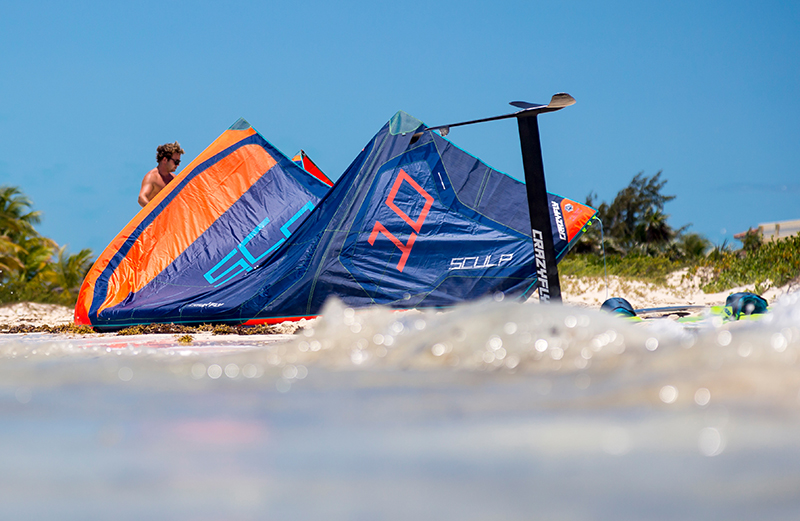
Who has been involved in the testing and R&D side of things?
The main testers were Petr Pechi Pechacek and Jeff Howard. Pechi is a highly experienced kiter and a passionate foiler since foils came out. Jeff, same as Pechi, has been into kitesurfing since forever and picked up foiling in its early days. Jeff has also been designing some kites and other flying objects. He is also into paragliding and building race drones, so knows a thing or two about aero and hydro design. As usual, other team riders tested in the later stages, when they pretty much had the final product in their hands. The R&D was done by the main man at CrazyFly, Jozef Bukovcak, who made the final choices on all designs and production methods.
What are the board options?
We have two foil boards in the range. Both are made with twintip technology, so without volume. The F-lite is a full carbon, extremely light and responsive with an ultra-small deck. It comes in at 115 x 44cm and weighs only 2.7kg. Combine it with the Up foil and you get a full foil set at only 5.5kg. The F-lite, with its small size, is designed for advanced riders who can get up on a foil without any problems. Once up on the foil, everyone appreciates its compact size. On the other hand, we have the Chill board. It comes in 130 x 46cm and weighs only 3kg. The Chill will give you a lot more planing area to generate speed and get up on the foil. Beginners especially will appreciate its larger size. Both boards feature a full deck pad that has a line under the back foot showing the position of the foil. High nose on both boards was a must have, and we added a concave deck for more comfort and easier gybes. Another bonus is that the foil is mounted into inserts on the bottom of the foil boards and the screws do not go through the board, so that the rider doesn’t have to step on screws on the deck.
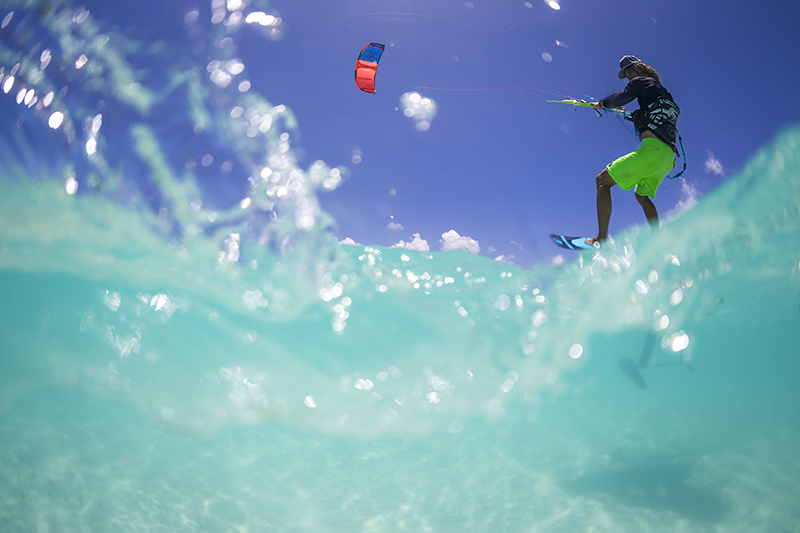
Which of your kites would you recommend riding with the foil?
Definitely the Sculp kite. It has incredible low end, stable pull, large on the bar depower and rock solid stability in the sky. Not much more is needed for a proper foil session.
The foils have been available for a few weeks now and we understand that you are already sold out – I guess this is a good sign! How has the feedback been from customers?
It is true, the demand for our foils is high, but the waiting time is no more than a week. By the time this issue is published, we will have stock ready to leave on the same day if you place an order. The feedback has been absolutely fantastic and, even better, so far no warranties. Looks like we hit the nail on the head this time.
This article originally appeared in TheKiteMag #26. To subscribe, go here.
